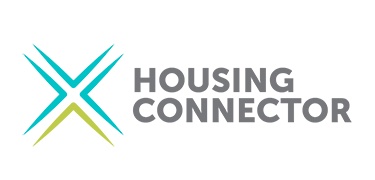
Housing Connector

Giving Homeless People a Second Chance at Housing
Seattle and its surrounding county have the third-largest homeless population in the U.S., at more than 11,750 people. Meanwhile, 4.5% of the county’s rental units stand vacant. The Seattle-based nonprofit Housing Connector builds partnerships and uses technology to connect social service agencies working to house homeless people with vacant rental properties.
Salesforce is Housing Connector’s central business system. All staff members are trained to use Salesforce to manage programs and access the information they need. With Sales Cloud, team members track property managers, case managers, residents, and prospective partners. Progress and performance are shared internally through Tableau dashboards. In response to reports of financial or behavioral problems, the Housing Stability Support Team uses Service Cloud to monitor the resolution of the issue. Salesforce apps and automations have eliminated manual work and increased efficiency, allowing Housing Connector to expand the geographic area and the number of residents it serves.
-
72%of participants have been housed in one unit for 2 years
-
2,900housed people have been supported by 2-person team
-
$900Kin risk mitigation funds administered
Removing Obstacles Between Higher-Risk Renters and Vacant Apartments
Housing Connector serves a specific segment of the homeless population: Individuals and families who can pay the rent and utilities for an apartment, or receive rental-subsidy support, and have a case manager from a Community Partner agency, such as the YWCA or Catholic Community Services. But they have a less-than-perfect rental record, perhaps a low credit score or a past eviction that has kept them from accessing a home.
Through funding from public and private grants, Housing Connector deploys market-based solutions that help residents overcome these barriers. The team negotiates Memorandums of Understanding (MOUs) with apartment owners and managers, who agree to reduce their screening criteria for applications. In exchange for the reduced criteria, Housing Connector guarantees rent payment for two years, serves as a single point of access for customer support, and provides damage mitigation funds beyond the residents’ security deposits, if necessary.
On the demand side, Community Partners commit to at least one year of housing stability support to residents who move into Housing Connector-supported units. If residents receive a lease violation, the nonprofit coordinates with the Community Partner case manager to provide conflict mitigation, behavioral support, or other social services.
Housing Connector started small in 2019, with the team of three tracking their work with Excel and Google spreadsheets. They quickly outgrew these basic systems. With a vision of growth and a national footprint, they invested in the Salesforce technology they needed to scale their impact, within their first year.
We utilize Salesforce to not only manage our programs and partnerships but also to drive efficiency at every level of the organization.”Housing Connector
Shkëlqim Kelmendi, Executive Director
Designing a Salesforce Ecosystem for Analytics and Scalability
Housing Connector built its Salesforce ecosystem with help from Bigger Boat Consulting, a registered partner with expertise in human services and affordable housing. They designed the Sales Cloud instance around six native objects: contacts, tenancies, cases, properties, accounts (active partners), and opportunities (organizations with potential to become partners).
Analytics are a top priority for Housing Connector, which has embedded Tableau dashboards in its Salesforce homepage using the app Tableau Online. Shkëlqim Kelmendi, the nonprofit’s executive director, said this helps team members quickly track key metrics like the number of move-ins and active inventory of rental units.
To streamline the housing search process, Housing Connector collaborated with Zillow on the Affordable Housing Search Platform, built on the online real-estate company’s existing rental property platform. Community Partners receive access to the tool to search for units in real time that not only match their clients’ preferences but have also agreed to waive their barriers. A data pipeline carries information such as listing activity and message volume into the nonprofit’s Sales Cloud and Tableau instances, so team members can keep a finger on the pulse of demand trends.
Once a client has moved into a rental unit, Housing Connector serves as a single point of contact for any problems. An email message from a property manager automatically triggers a new service case in Service Cloud. The streamlined triage system enables the nonprofit’s two-person Housing Stability Support Team to quickly respond and coordinate support from more than 1,600 case managers.
Explore the Solutions:
Service Cloud
Tableau
Salesforce Platform
Growing Impact and Increasing Transparency
Extending its Salesforce technology has helped this nonprofit rapidly scale its impact. Doug Minkler, Senior Manager of Product and Technology, writes automations on the Salesforce Platform using declarative programming (Flow). Deploying Apsona, obtained through AppExchange, has taken the organization’s email communications to the next level. DocuSign Gen for Salesforce and DocuSign eSignature for Salesforce have streamlined the process of generating MOUs and getting them signed.
Housing Connector has expanded beyond Seattle and King County into neighboring Pierce County and the Denver metro area, working with 56,000 rental units total. From a team of four in January 2021, the staff grew to 16 over 14 months — larger but still a lean, efficient crew, relative to the logistics and data they manage.
Each new hire is expected and trained to be fully engaged with the Salesforce ecosystem and the insights it provides. Trailhead is critical for onboarding and keeping the operation moving forward, said Minkler. Team members working from home in different cities collaborate over Slack; it’s also used to share quick videos on how to use new technical tools and features.
What’s next? Housing Connector is implementing Experience Cloud to give its partners a more seamless experience with greater transparency. One planned project is a portal through which property owners can generate their own reports, instead of requesting reports from the nonprofit’s team, and update key information.
Driving Efficiency Without Losing the Humanity
Forging strong partnerships and working efficiently will be essential in the next few years. Housing Connector hopes to keep expanding into new cities and states, without sacrificing the human connections that are helping families get off the streets and into housing.
“We continue to identify ways to integrate systems to ultimately make the work of our team easier, bring transparency, and drive automation, so that our team can do the things that you can’t automate — build relationships, make connections, problem-solve with a case manager or a property manager,” said Kelmendi. “My goal is to save as much of their time for human connection as possible.”
Make data-driven decisions with Tableau.
About Housing Connector
Housing Connector is a nonprofit, business-to-business organization connecting private property owners and managers to people in need of housing. This 501c(3) nonprofit builds regional partnerships to lower barriers and increase access to housing.